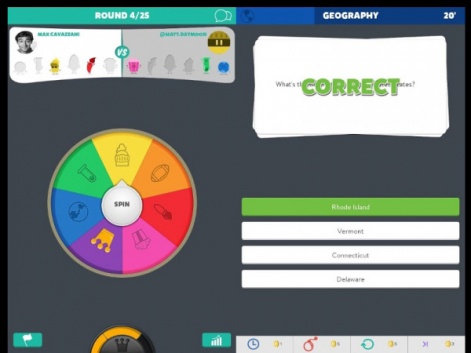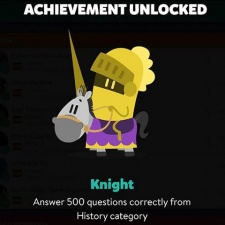With 160 million downloads of its addictive, high session frequency game Trivia Crack, it's no surprise that developer Etermax is keen on in-game advertising.
Not only is the trivia genre notorious difficult to directly monetise in terms of IAPs, but the game's key markets - Australia, Canada, UK, US, France, Italy, Netherland, Spain, Mexico, Brazil and Argentina - are also prime markets for advertisers.
What is suprising, though, is that the Bueno Aries-based developer has just sighed an exclusive global deal with Google's AdMob to provide all its inventory.
We decided to ask CEO Maximo Cavazzani why.
PocketGamer.biz: Given the sophisticated state of mobile ad mediation, why have you decided to go with one exclusive partner, and why Google AdMob?
Maximo Cavazzani: Our experience working with Google has been incredibly satisfying over the years. When Trivia Crack became a massive success all over the world, AdMob was the natural choice because it can provide advertisement worldwide with top fill-rates across all platforms.
Our experience with smaller networks is that they specialize in just a few countries/formats and their fill rates are usually much more limited.
From the user experience perspective, Google's policies ensures top quality advertisement without "tricky" ads (ads that can't be closed, etc).
And finally, dealing with only one partner vs. 20 allows us to focus on our core business: creating great games.
Is 100% of your revenue generate from advertising or does IAP still play a part?
We have three main revenue sources: IAPs, advertising and offline businesses.
Unlike other developers, we included ads right from the start because we started in Latin America where less than 20% of the population has access to bank accounts. So an all-out IAP business was not feasible.
AdMob was the natural choice because it can provide advertisement worldwide with top fill-rates across all platforms.Maximo Cavazzani
Once we hit big the US and the European markets, IAPs became a significant proportion of our revenue. IAPs are less cyclical and gives you more stability over time.
Regarding offline, we have a TV show on broadcast television in several countries as part of a global deal with media giant Televisa, and a global distribution deal in the works for our line of merchandise (toys, clothing, back to school products).
How is the increasing monetization of in-game advertising changing the way you design games and think about session length and retention/engagement, especially in terms of your Trivia Crack sequel?
It’s the other way around. Our focus is 100% product. We create the best games with great user experiences and then we find ways to monetize them, design the economy and create in-apps.
If you do it the other way around you don’t have a worldwide hit. The key learning is that if you have a good product, people will love it and you will make money out of it.

Trivia Crack has become a social phenomenon because it is a good product, exceeding the boundaries of casual video games, with multiple revenue streams.
It's been said the emergence of brand advertising will be the next big thing in the market. Do you think you are well positioned for this?
With the Google AdMob deal in place, we are more than well positioned in the programmatic space. Additionally, we are working on a successor to Trivia Crack - projected for release in the second half of the year - that will offer the world’s top brands to be part of the game.
We have already signed agreements with the biggest media outlets and companies in the world for this project.





















